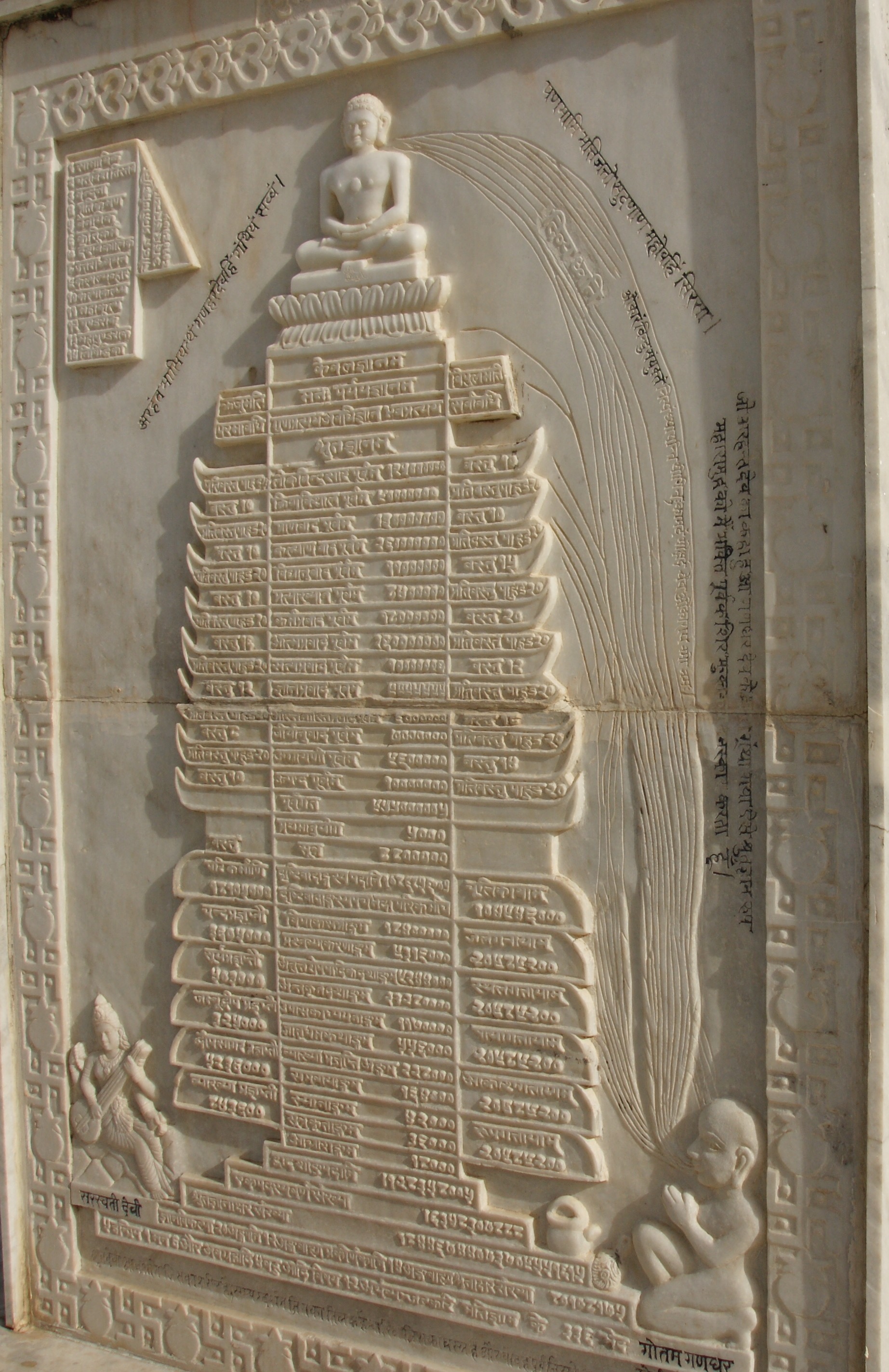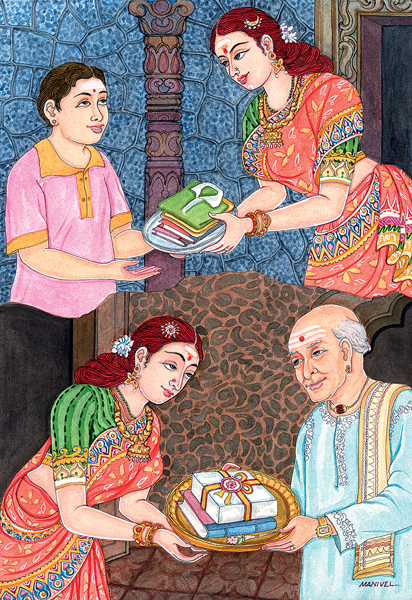|
Nigoda
In Jain cosmology, the Nigoda is a realm existing in which the lowest forms of invisible life reside in endless numbers, and without any hope of release by self-effort. Jain scriptures describe nigodas which are microorganisms Kanti V. Mardia, Aidan D. Rankin: Living Jainism. An Ethical Science, Alresford 2013. living in large clusters, having only one sense,Meera Baindur: Nature in Indian Philosophy and Cultural Traditions, Sophia Studies in Cross-cultural Philosophy of Traditions and Cultures 12, New Delhi 2015, p. 100. having a very short life and are said to pervade each and every part of universe, even in tissues of plants and flesh of animals. The Nigoda exists in contrast to the Supreme Abode, also located at the Siddhashila (top of the universe) where liberated souls exist in omnisciencent and eternal bliss. According to Jain tradition, it is said that when a human being achieves liberation (Moksha) or if a human would be born as a Nigoda due to karma Karma (, fr ... [...More Info...] [...Related Items...] OR: [Wikipedia] [Google] [Baidu] |
Jain Cosmology
Jain cosmology is the description of the shape and functioning of the Universe (''loka'') and its constituents (such as living beings, matter, space, time etc.) according to Jainism. Jain cosmology considers the universe as an uncreated entity that has existed since infinity with neither beginning nor end. Jain texts describe the shape of the universe as similar to a man standing with legs apart and arms resting on his waist. This Universe, according to Jainism, is broad at the top, narrow at the middle and once again becomes broad at the bottom. Six eternal substances According to Jains, the Universe is made up of six simple and eternal substances called ''dravya'' which are broadly categorized under Jiva (Living Substances) and Ajiva (Non Living Substances) as follows: ''Jīva (Jainism), Jīva'' (Living Substances) * Jīva (Jainism), Jīva i.e. Souls – ''Jīva'' exists as a reality, having a separate existence from the body that houses it. It is characterised by ''chetan ... [...More Info...] [...Related Items...] OR: [Wikipedia] [Google] [Baidu] |
Microorganism
A microorganism, or microbe, is an organism of microscopic scale, microscopic size, which may exist in its unicellular organism, single-celled form or as a Colony (biology)#Microbial colonies, colony of cells. The possible existence of unseen microbial life was suspected from antiquity, with an early attestation in Jain literature authored in 6th-century BC India. The scientific study of microorganisms began with their observation under the microscope in the 1670s by Anton van Leeuwenhoek. In the 1850s, Louis Pasteur found that microorganisms caused food spoilage, debunking the theory of spontaneous generation. In the 1880s, Robert Koch discovered that microorganisms caused the diseases tuberculosis, cholera, diphtheria, and anthrax. Microorganisms are extremely diverse, representing most unicellular organisms in all three domains of life: two of the three domains, Archaea and Bacteria, only contain microorganisms. The third domain, Eukaryota, includes all multicellular o ... [...More Info...] [...Related Items...] OR: [Wikipedia] [Google] [Baidu] |
Jain Scriptures
Jain literature () refers to the literature of the Jain religion. It is a vast and ancient literary tradition, which was initially transmitted orally. The oldest surviving material is contained in the canonical ''Jain Agamas'', which are written in Ardhamagadhi, a Prakrit ( Middle-Indo Aryan) language. Various commentaries were written on these canonical texts by later Jain monks. Later works were also written in other languages, like Sanskrit and Maharashtri Prakrit. Jain literature is primarily divided between the canons of the ''Digambara'' and '' Śvētāmbara'' orders. These two main sects of Jainism do not always agree on which texts should be considered authoritative. More recent Jain literature has also been written in other languages, like Marathi, Tamil, Rajasthani, Dhundari, Marwari, Hindi, Gujarati, Kannada, Malayalam and more recently in English. Beliefs Jains believe their religion is eternal, and the teachings of the first tīrthaṅkara, Ṛṣ ... [...More Info...] [...Related Items...] OR: [Wikipedia] [Google] [Baidu] |
Kantilal Mardia
Kantilal Vardichand "Kanti" Mardia (born 1935) is an Indian-British statistician specialising in directional statistics, multivariate analysis, geostatistics, statistical bioinformatics and statistical shape analysis. He was born in Sirohi, Rajasthan, India in a Jain family and now resides and works in Leeds. He is known for his series of tests of multivariate normality based measures of multivariate skewness and kurtosis as well as work on the statistical measures of shape. Life and career Mardia was educated at the Ismail Yusuf College at the University of Bombay (BSc 1955, MSc in statistics 1957), the University of Poona (MSc in pure mathematics 1961), the University of Rajasthan (PhD 1965) and the University of Newcastle Upon Tyne (PhD 1967, DSc 1973). He held academic positions at the Institute of Science, Mumbai and the University of Hull. Mardia was appointed professor of applied statistics and head of the Department of Statistics in the School of Mathematics at ... [...More Info...] [...Related Items...] OR: [Wikipedia] [Google] [Baidu] |
Siddhashila
Siddhashila is an area in Jain cosmology at the apex of the universe, which is where the Jains believe people who have become '' arihants'' and ''tirthankaras'' go after they die and attain ''moksha ''Moksha'' (; , '), also called ''vimoksha'', ''vimukti'', and ''mukti'', is a term in Jainism, Buddhism, Hinduism, and Sikhism for various forms of emancipation, liberation, '' nirvana'', or release. In its soteriological and eschatologic ...''. Such people are called '' siddhas'' after they discard their mortal body, hence the origin of the term. See also * Kevala jnana * Jainism and non-creationism * Timeline of Jainism References Moksha Jain cosmology {{Jainism-stub ... [...More Info...] [...Related Items...] OR: [Wikipedia] [Google] [Baidu] |
Moksha
''Moksha'' (; , '), also called ''vimoksha'', ''vimukti'', and ''mukti'', is a term in Jainism, Buddhism, Hinduism, and Sikhism for various forms of emancipation, liberation, '' nirvana'', or release. In its soteriological and eschatological senses, it refers to freedom from '' saṃsāra'', the cycle of death and rebirth. In its epistemological and psychological senses, ''moksha'' is freedom from ignorance: self-realization, self-actualization and self-knowledge. In Hindu traditions, ''moksha'' is a central concept and the utmost aim of human life; the other three aims are ''dharma'' (virtuous, proper, moral life), '' artha'' (material prosperity, income security, means of life), and '' kama'' (pleasure, sensuality, emotional fulfillment). Together, these four concepts are called Puruṣārtha in Hinduism. In some schools of Indian religions, ''moksha'' is considered equivalent to and used interchangeably with other terms such as ''vimoksha'', ''vimukti'', '' kaivalya'' ... [...More Info...] [...Related Items...] OR: [Wikipedia] [Google] [Baidu] |
Karma
Karma (, from , ; ) is an ancient Indian concept that refers to an action, work, or deed, and its effect or consequences. In Indian religions, the term more specifically refers to a principle of cause and effect, often descriptively called the principle of karma, wherein individuals' intent and actions (cause) influence their future (effect): Good intent and good deeds contribute to good karma and happier Reincarnation, rebirths, while bad intent and bad deeds contribute to bad karma and worse rebirths. In some scriptures, however, there is no link between rebirth and karma. In Hinduism, karma is traditionally classified into four types: Sanchita karma (accumulated karma from past actions across lifetimes), Prārabdha karma (a portion of Sanchita karma that is currently bearing fruit and determines the circumstances of the present life), Āgāmi karma (future karma generated by present actions), and Kriyamāṇa karma (immediate karma created by current actions, which may y ... [...More Info...] [...Related Items...] OR: [Wikipedia] [Google] [Baidu] |
Motilal Banarsidass
Motilal Banarsidass Publishing House (MLBD) is an Indian academic publishing house, founded in Delhi, India in 1903. It publishes and distributes serials, monographs, and scholarly publications on Asian religions, Buddhology, Indology, Eastern philosophy, history, culture, arts, architecture, archaeology, language, literature, linguistics, musicology, mysticism, yoga, tantra, occult, medicine, astronomy, and astrology. Amongst its publications are the 100 volumes of the Mahapuranas; the 50 volumes of the '' Sacred Books of the East'', edited by Max Müller; ''Bibliotheca Buddhica'' (30 volumes in 32 pts); Ramcharitmanas with Hindi and English translations; the Manusmriti in 10 volumes and the Sanskrit lexicon; and the 7 volumes of ''Encyclopedia of Indian Philosophies''. It also brings out books based on research and study conducted at organizations such as the Indian Council of Historical Research (ICHR), Indira Gandhi National Centre for the Arts (IGNCA), and Indian Cou ... [...More Info...] [...Related Items...] OR: [Wikipedia] [Google] [Baidu] |





